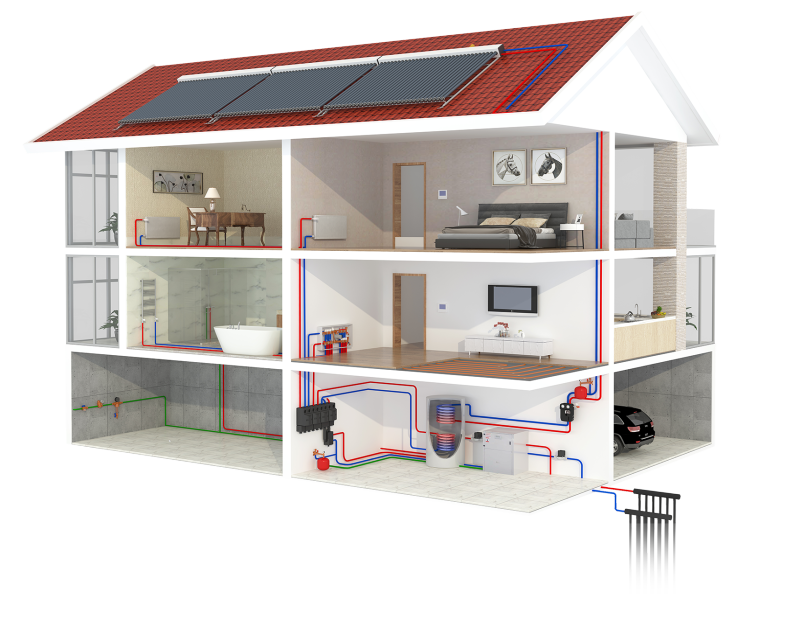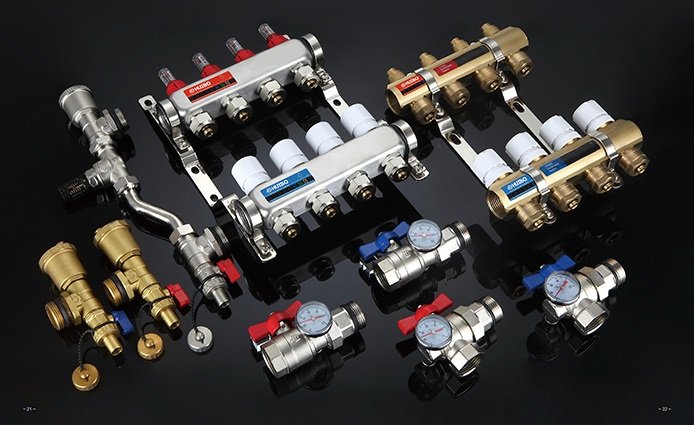Are you struggling with how to properly distribute heat across your building or project? A heating manifold could be the solution you need. Without an efficient system to distribute heat, you risk uneven heating, higher energy bills, and even system failures. In this article, we’ll explain what a heating manifold is, how it works, and why it’s essential for efficient heating in both residential and commercial buildings. By the end, you’ll understand how a heating manifold can help you achieve reliable, cost-effective, and energy-efficient heating.
A heating manifold ensures proper distribution of hot water across multiple radiators or underfloor heating systems, preventing uneven heat distribution and improving system efficiency.
If you’re interested in ensuring your heating system works at its best, this article is for you. Let’s dive deeper into what a heating manifold is, how it functions, and how it can benefit your heating setup.

What is a Heater Manifold?
A heater manifold is a central device used to control and distribute hot water or heating fluids to multiple heating circuits, such as radiators or underfloor heating systems. The manifold consists of a set of pipes, valves, and connectors that allow hot water to flow from a boiler to different areas of the system. It helps in managing the flow of water to individual circuits, making sure that every section of the system receives the correct amount of heat.
Typically, a central heating manifold is part of a larger heating system and is designed to handle multiple outputs. It is essential for systems like underfloor heating manifolds, where a large volume of water needs to be evenly distributed across various zones. The manifold is usually mounted in a central location and connected to the main pipes that come from the boiler or heat source.
Heating manifolds are vital in ensuring efficient performance by balancing the water flow. They often include shutoff valves that allow each circuit to be controlled individually, providing flexibility and easy maintenance. The quality of the manifold directly influences the efficiency and longevity of the heating system.
Can You Run Radiators Off a Manifold?
Yes, you can run radiators off a manifold. In fact, using a heating manifold for radiators is one of the most common applications. A heating manifold allows hot water from the boiler to be distributed to multiple radiators in a building. Each radiator is connected to the manifold through a separate loop, allowing you to control the flow to each radiator individually.
The heating manifold ensures that hot water reaches each radiator at the right temperature and flow rate, making it possible to achieve balanced heating throughout the space. This is particularly useful for larger buildings or multi-zone systems, where you need to ensure that each room or area receives consistent warmth.
Using a heating manifold for radiators also simplifies the installation process. Rather than running separate pipes for each radiator directly from the boiler, you can use a central manifold, which makes the system more organized and efficient. Additionally, a manifold system allows for easy adjustment of flow rates and temperature for individual radiators, ensuring optimal heating control.

How Does a Manifold System Work?
A manifold system works by distributing hot water from a central boiler or heating source to multiple heating zones or circuits. The manifold acts as the central hub for the entire system, with water entering the manifold from the heat source and then being directed to different outputs (such as radiators or underfloor heating circuits).
In a typical setup, hot water flows into the manifold, where it is distributed to each heating loop through separate outlets. Each outlet is equipped with valves to regulate the flow and pressure of water, ensuring that each circuit receives the correct amount of heat. In underfloor heating systems, for example, the manifold will control the water flow through a network of pipes embedded in the floor to provide consistent warmth across the entire space.
One of the main benefits of a manifold system is its ability to provide independent control for each circuit. By adjusting the flow rate for each outlet, you can customize the temperature in different rooms or areas, improving overall comfort and energy efficiency. A heating manifold diagram can help you understand how the system is laid out and where each circuit connects to the manifold.
What is the Purpose of a Manifold?
The main purpose of a manifold in a heating system is to distribute heated water or fluid efficiently to multiple circuits or outputs. It serves as a central control point, ensuring that each area of the system receives the right amount of heat. Without a manifold, it would be much more difficult to manage multiple radiators or underfloor heating circuits effectively.
A manifold helps balance the flow of water between different areas of the heating system. By allowing you to regulate water flow to each circuit independently, a manifold gives you greater control over the temperature in each room or zone. This is particularly useful in multi-zone heating systems, where you need to maintain consistent heating across different areas with varying heating needs.
Another key purpose of a manifold is to improve energy efficiency. By allowing for precise control over the flow and temperature of water in each circuit, a manifold helps prevent heat loss and minimizes energy waste. It also reduces the risk of overheating or underheating, which can lead to wasted energy and higher bills.
What is a Hot Water Manifold?
A hot water manifold is a specific type of manifold designed to distribute hot water throughout a heating system. It is typically used in systems like central heating, underfloor heating, or hydronic radiators. The manifold takes the hot water supplied by the boiler and ensures that it is evenly distributed to various circuits or heating zones.
In a hot water manifold, the water flows from the boiler into the manifold, where it is directed to the appropriate heating circuits. This ensures that the water is properly balanced and reaches the desired temperature for each zone. Hot water manifolds are often equipped with flow meters, temperature sensors, and control valves to allow for precise regulation of water flow and temperature.
A hot water manifold is crucial for maintaining the efficiency and performance of a heating system. It ensures that each circuit receives the appropriate amount of hot water, preventing overheating or underheating. Whether you’re using a central heating manifold or an underfloor heating manifold, the manifold helps optimize heat distribution for better comfort and energy efficiency.
Conclusion
A heating manifold is an essential component for any modern heating system, whether it’s used for radiators or underfloor heating. By distributing hot water efficiently and allowing for individual control of different circuits, a manifold helps improve system performance, energy efficiency, and comfort. Whether you’re working on a new installation or looking to improve an existing system, understanding how a heating manifold works and its benefits will help you make informed decisions. A well-designed manifold system ensures reliable, cost-effective heating for any building or project.
Choose IVALVECRAFT, choose reliable partner, enjoy the high quality and best service.


